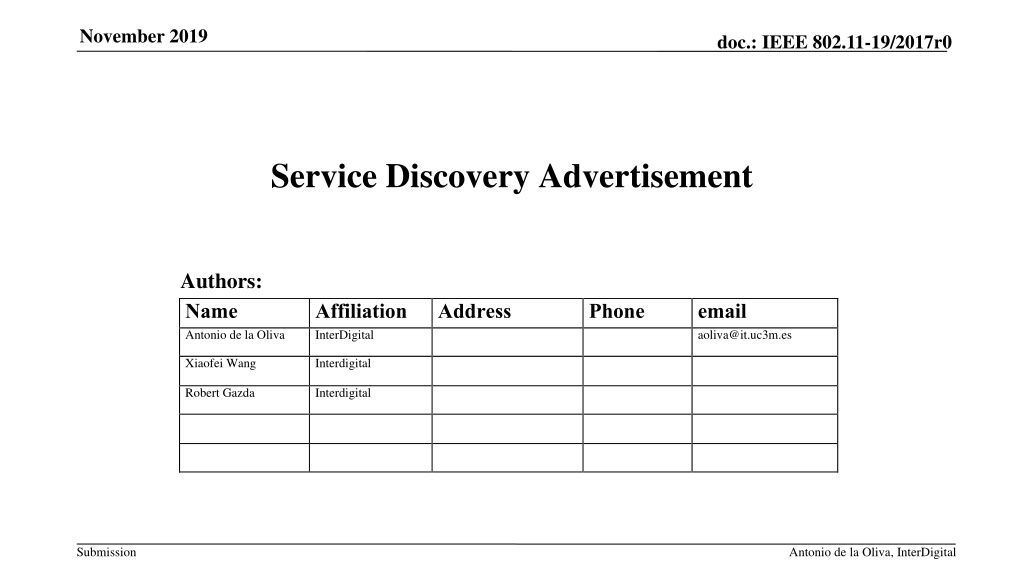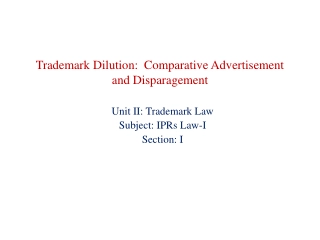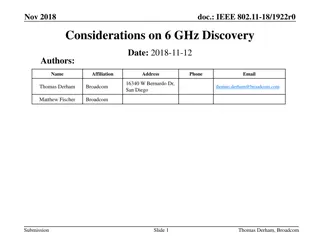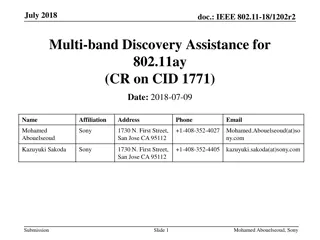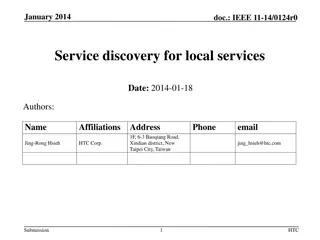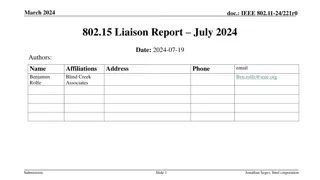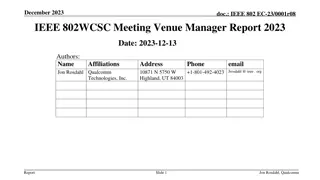IEEE 802.11-19/2017r0 Service Discovery Advertisement
The document discusses the service discovery requirements for the IEEE 802.11bc amendment, proposing mechanisms such as beacon/periodic frame transmission, eBCS service frame request/response, and ANQP. It emphasizes the need for a broadcast discovery mechanism to cater to listening-only STAs and outlines the information that service discovery should provide, including service IDs, negotiation methods, and service restrictions. Additionally, it emphasizes the identification of services through elements like MAC addresses, IPv4, IPv6 addresses, and higher layer identifiers.
Download Presentation

Please find below an Image/Link to download the presentation.
The content on the website is provided AS IS for your information and personal use only. It may not be sold, licensed, or shared on other websites without obtaining consent from the author. Download presentation by click this link. If you encounter any issues during the download, it is possible that the publisher has removed the file from their server.
E N D
Presentation Transcript
November 2019 doc.: IEEE 802.11-19/2017r0 Service Discovery Advertisement Authors: Name Antonio de la Oliva Affiliation InterDigital Address Phone email aoliva@it.uc3m.es Xiaofei Wang Interdigital Robert Gazda Interdigital Submission Antonio de la Oliva, InterDigital
November 2019 doc.: IEEE 802.11-19/2017r0 Service discovery requirements Within the requirements document there is the explicit need for service discovery: R3.5.3: The 802.11bc amendment shall have a mechanism for eBCS APs to advertise their eBCS capabilities and eBCS services provided. Current discussion on SFD assumes use of ANQP for service discovery ANQP is a pre-association Request/Response based protocol The use of ANQP leaves out the possibility for STAs not willing to transmit to obtain service description We propose a new broadcast discovery mechanism for 11bc that complements the ANQP-based one, for listening-only STAs Service distribution may be based on periodic frame transmission, e.g., beacons or any other periodic frame Submission Antonio de la Oliva, InterDigital
November 2019 doc.: IEEE 802.11-19/2017r0 Proposal We propose service discovery can be done based on 3 mechanisms: Beacon frame/periodic frame transmission eBCS Service frame request/response ANQP Submission Antonio de la Oliva, InterDigital
November 2019 doc.: IEEE 802.11-19/2017r0 Service discovery information The information provided may consist on a list of services, including: ID of the service, Indication if the service requires association Indication of the negotiation method (eBCS request/response, ANQP, etc.) ID for the service Human readable description Indication of restrictions for the service (e.g., it is a pay-per view service) URL for registration or information Submission Antonio de la Oliva, InterDigital
November 2019 doc.: IEEE 802.11-19/2017r0 Identification of Services In order to advertise a service an identifier is needed. Services can be identified through the following elements: MAC Address (maybe use of per-service multicast addresses) IPv4 Address IPv6 Address Higher layer identifier (e.g., 5-tuple, MPEG Transport stream identifier) Submission Antonio de la Oliva, InterDigital
November 2019 doc.: IEEE 802.11-19/2017r0 Periodic Framing Mechanisms for providing services available in the network, without requiring request/response dialogues are needed to support different use cases The best way of doing this will be to have service discovery information in the beacon frame In case the beacon frame cannot be extended with this information, a periodic frame transmission should be added to cover the service information distribution. eBCS Service Advertisement Submission Antonio de la Oliva, InterDigital
November 2019 doc.: IEEE 802.11-19/2017r0 Ways of providing the service discovery For STAs not willing or able to transmit, the AP should broadcast periodically the information about the eBCS services available. This can be done in several ways: Periodic transmission of a frame with the services description. Piggyback it on a periodic frame, e.g., such as the eBCS Info frame discussed in [1]. Service information can be added to the periodic frames carrying the Origin Authentication key Submission Antonio de la Oliva, InterDigital
November 2019 doc.: IEEE 802.11-19/2017r0 Straw Poll Should 802.11bc amendment enable a mechanism to provide service information through periodic frame transmissions? 1. Yes 2. No 3. Abstain Submission Antonio de la Oliva, InterDigital
November 2019 doc.: IEEE 802.11-19/2017r0 References [1] 11-19-1802-00-00bc-tesla-improvement Submission Antonio de la Oliva, InterDigital
